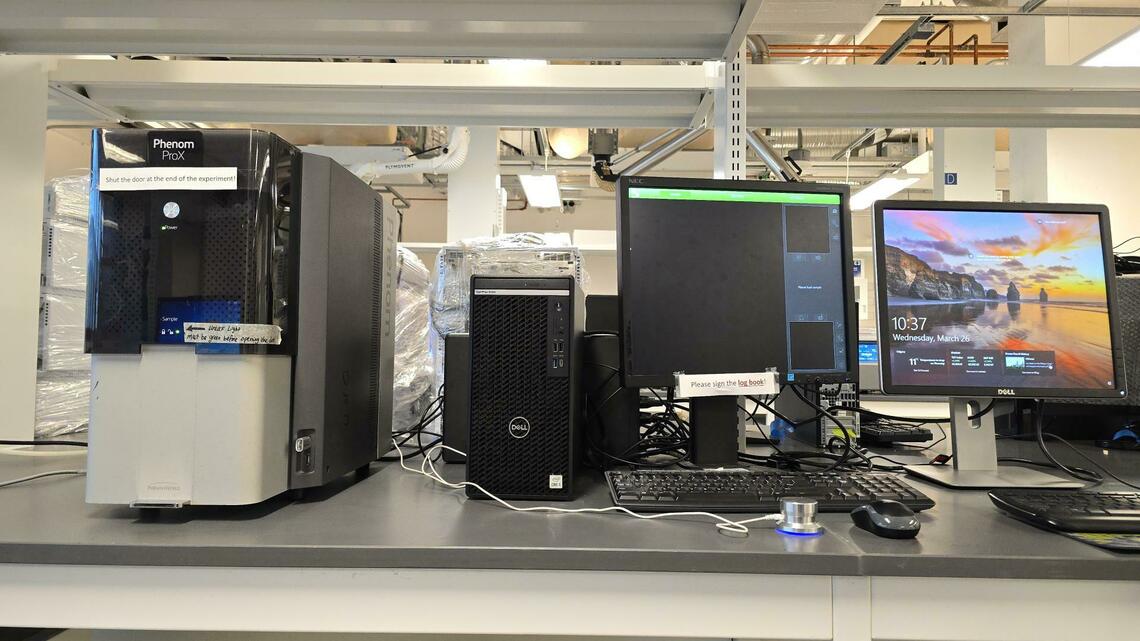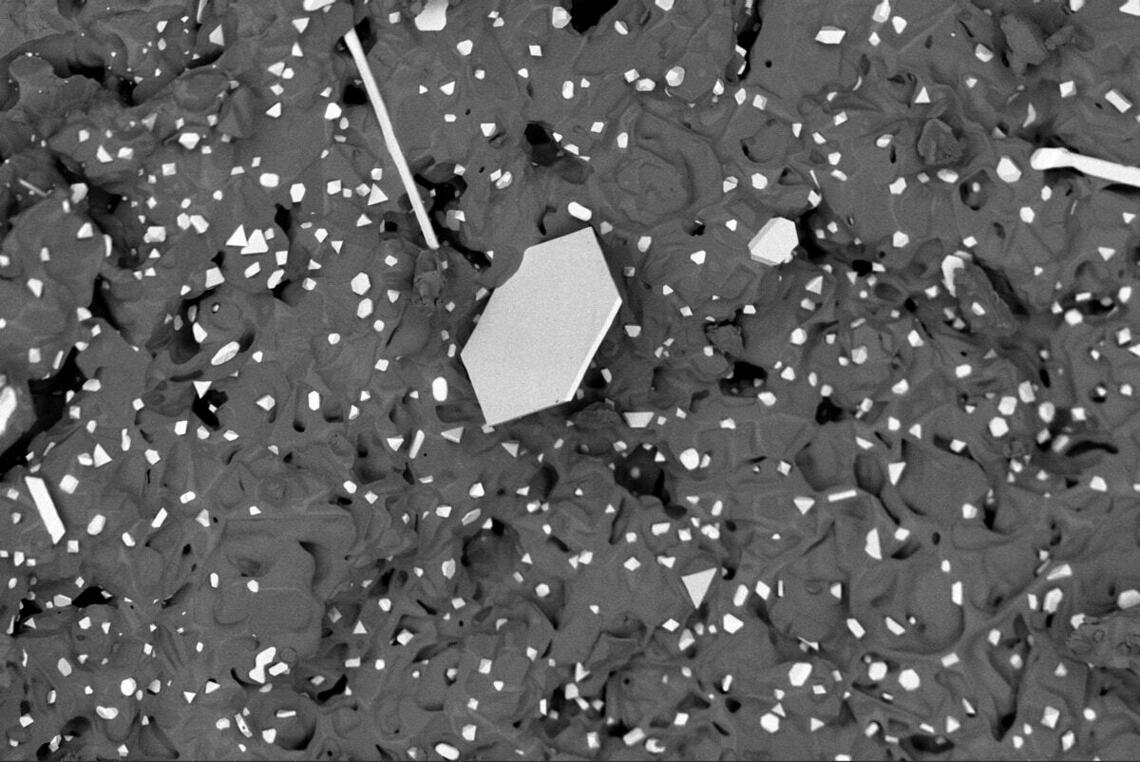TEM
ThermoFisher Talos F200X G2 Transmission Electron Microscope
Technique
Scanning Electron Microscopy (SEM) is a type of electron microscope that provides detailed images of a sample’s surface by scanning it with a focused beam of electrons. Unlike optical microscopes, which use light, SEM uses electrons to produce high-resolution, 3D images.
How SEM Works:
- Electron Beam: A focused electron beam is directed at the sample surface.
- Interaction with Sample: When the electrons interact with the sample, they generate secondary electrons, backscattered electrons, and X-rays, among other signals.
- Detection: Detectors collect these signals to form an image.
- Secondary electrons are the most common signal used to generate the image. They provide high-resolution details about the sample's surface topography.
- Backscattered electrons give information about the composition of the material.
Key Features:
- High Resolution: SEM can provide much higher resolution than optical microscopes, often down to nanometer scales.
- 3D Surface Imaging: SEM is particularly useful for analyzing the surface structure of objects in 3D, making it valuable in fields like materials science, biology, and electronics.
- Versatility: It can analyze a wide range of materials, including metals, ceramics, polymers, and biological samples (with appropriate preparation).
Technical Specifications
The sample material must be able to withstand a high vacuum environment without outgassing (even for lower vacuum conditions, the system must get to high vacuum, first). It must be clean. It may be attached to the sample holder using conductive paint or clean clips. The sample should be electrically grounded to the sample holder to minimize charging. If the sample is insulating, there are a number of charge mitigation strategies available in the microscope, or the sample may be coated with a conductive layer (we can provide Au/Pd coating upon request). Note that rough surfaces should be conformally coated.
- X limit
- Y limit
- Z limit
Access Information
Subscribing Users:
- Contact cpe.rits@ucalgary.ca to request training.
- Training consists of a 2-hour hands-on session with RITS staff with up to 2 other users. Users should come prepared with a sample of their own that they want to analyze.
- After completing training, user will be observed for their first "start-up" session.
- User will be granted access to reservation calendar and keycard access to the lab.
Analytical Service:
- Contact cpe.rits@ucalgary.ca to discuss technical requirements and arrange sample drop-off.
Resources
- Phenom ProX product page
- SEM SOP
- General SEM + EDS information
- Reservation calendar

Phenom XPro Scanning Electron Microscope
RITS Laboratory

Ceramic sample with platinum particles, the result of a failed heating stage. Horizontal field width = 127 μm.
ThermoFisher Scientific
